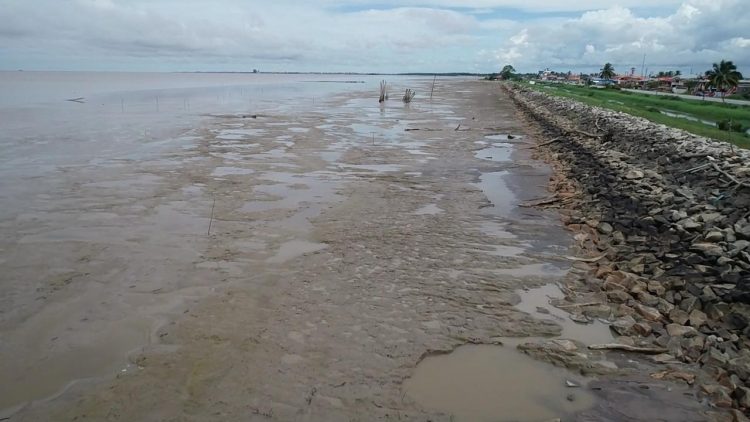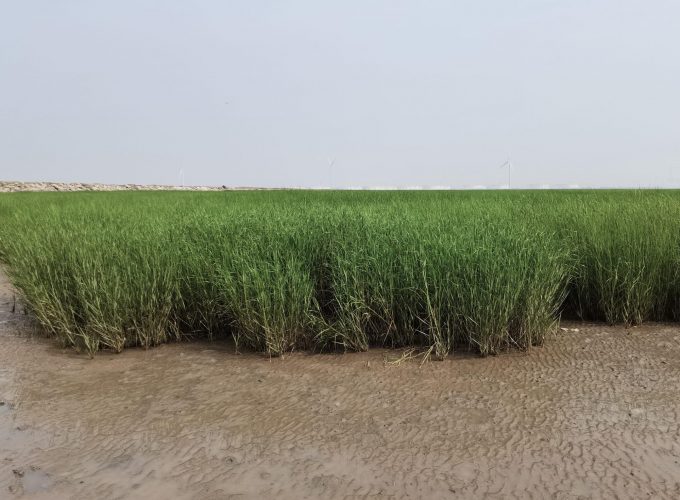With almost every child on earth currently exposed to climate and environmental hazards, it is imperative for future generations that action be taken to mitigate these effects. Young people are realising the risks they face and are taking action to protect the environment and secure their future.
Young environmental advocate, Deopaul Somwaru, is taking matters into his own hands with his plan to restore the once-thriving mangrove forest along the coastline of Region Three (Essequibo Islands-West Demerara).

The term mangrove refers to a unique set of coastline plants that have adapted to survive extreme saline conditions. These plants serve as wave buffers that protect from flooding while also performing key environmental services such as serving as carbon sinks and being incubators for fish fingerlings. However, these plants are constantly under threat from anthropogenic factors which include, but are not limited to, dumping of garbage, and land clearing for development. Addition-ally, they are also susceptible to climatic change as well.
The importance of mangroves can never be understated and with almost 90 per cent of Guyana’s population living on its coast, which is below sea level at high tide, the cause for worry is great. Mangroves also act as buffers to reduce the strain put on man-made sea defences but in Guyana, although protected, these mangroves are destroyed to facilitate development.
More recently, the country saw a large swathe of mangroves being cleared at Versailles/Malgre Tout, on the West Bank of Demerara to facilitate the construction of a shore-base facility to service the needs of the oil & gas sector.
According to Somwaru, in an interview with the Stabroek News, sea defence should be of utmost importance.
“Therefore, given that mangroves serve as a key natural sea defence, we must protect them, because, without them, we are putting ourselves at risk of flooding. Also, given the importance of the fishing sector within Guyana, we must protect our mangroves since they are very valuable in the incubation of fish fingerlings,” the 23-year-old said.
The young man was recently awarded one of four grants by the United Nations Children’s Fund (UNICEF) Guyana, and the Rights of the Child Commission (RCC) Climate Change-makers Initiative. The grant is aimed at providing youths with the resources to implement climate action projects.

Somwaru’s project will be initially focussed on the destroyed mangrove forests in Region Three, particularly Windsor Forest, where the entire forest was devastated due to climatic and anthropogenic factors. He said that residents have already begun to see the side effects, especially during the king tide periods (spring tides) in the month of October where some communities along the coast experienced overtopping which resulted in loss of agricultural crops, livestock, and household appliances.
“The site for this project is Windsor Forest and I am not sure if you are aware but up until a few years ago, along the coast, there was a thriving mangrove forest and ecosystem there, but it was decimated due to climatic conditions and also other issues, so what I am aiming to do with this project is to initiate the regrowth process of those mangroves there,” the young environmental advocate declared.
Firm grasp
He notes that in order to properly restore mangrove forests, one must first have a firm grasp of the most efficient and effective methods of replanting. Following intense research, he concluded that the best catalyst for natural mangrove regrowth is to use the Spartina brazinalis or cord grass to accelerate the building up of mudflats for mangroves’ regrowth.
“To do so I am exploring a particular method to do so. I am going to use the spartina grass commonly known as the cord grass as a pioneer species as sort. I am going to plant the grass along the mudflats and its primary role is to build the mudflats and act as shelter for the seedlings because they [cord grass] tend to grow into clumps and they spread along the mudflats. They serve as wave breaks which then trap sediments between them and they start to build the mudflat because first off the mangroves need a certain soil depth before they can properly establish roots and grow and secondly they need some sort of shelter because as seedlings they’re [mangroves] very susceptible to the waves,” he explained.
He added that the heavy waves tend to wash the mangrove seedlings away if they are not adequately protected and he discovered that cord grass, as a natural wave breaker, offers the level of protection for the seedlings to mature to self-sufficiency.
“The way I am doing this is, it is going to start off as a test where I’ll establish certain quadrants and plant patches of the grass. Then over the coming months monitor the rate of growth, the elevation that it is able to attain with the mud banks and then I will introduce the mangroves to see how well they fare and from that, based on the data gathered, I’d be able to make better adjustments and further expand the planting of those spartina grass,” Somwaru told the Stabroek News.
Apart from planting the cord grass, the young man is also putting down some hard structures in the form of concrete domes that are going to be there to anchor the grass, temporarily. He explained that it is necessary since the grass is not impervious to the waves despite having the flexibility to withstand some wave action.
The end goal, for the environmental advocate, is to replant mangroves so that the forest starts to regrow itself.
“We need it because of climate change we are getting higher sea levels and because of that we should brace ourselves for flooding. The grass is going to be sourced from Courida Park, Ogle [East Coast Demerara] because there is a very large salt marsh there so I can get the grass from there,” he said.
The major challenge, for the young man and his team, will be working with the tides. Since the mudflats are only accessible during low tide, it means that work can only progress during that time. He anticipates early mornings and late evenings in the mudflats.
Somwaru is no stranger to environmental advocacy and has initiated and participated in several clean up campaigns. He is hoping that this project sparks more awareness of the need to protect the mangrove forests as buffer zones and unique ecosystems.






